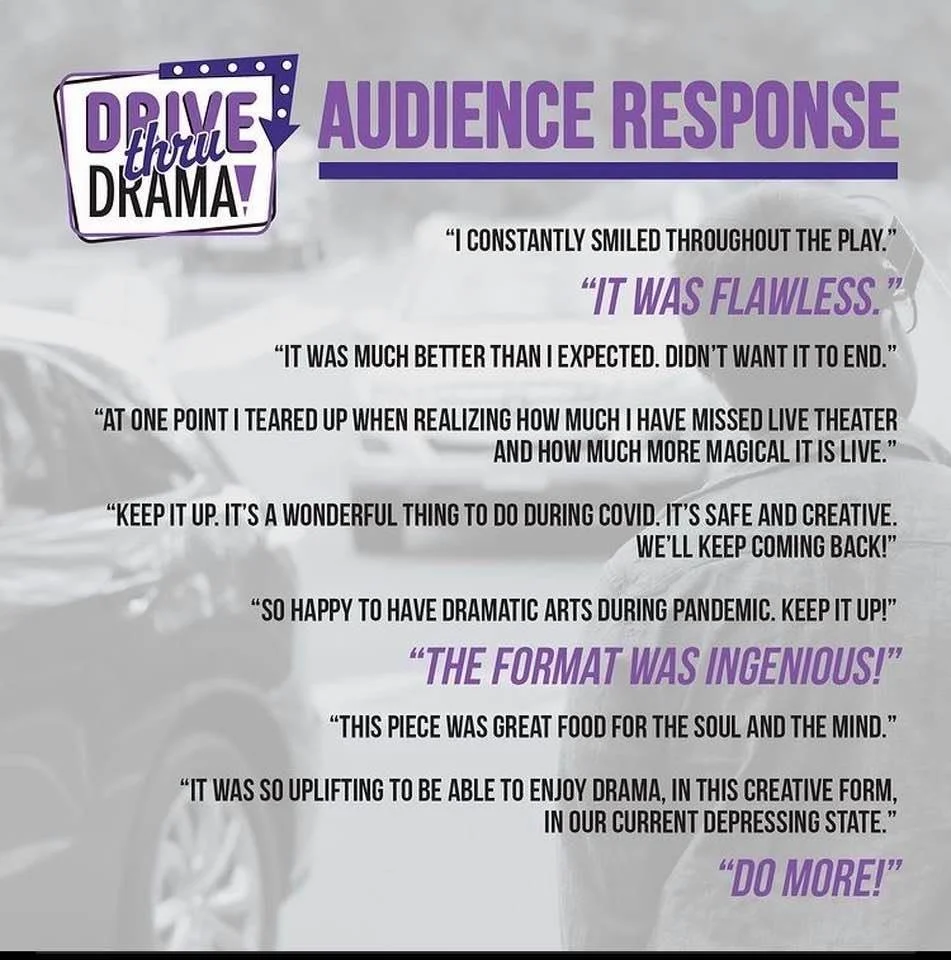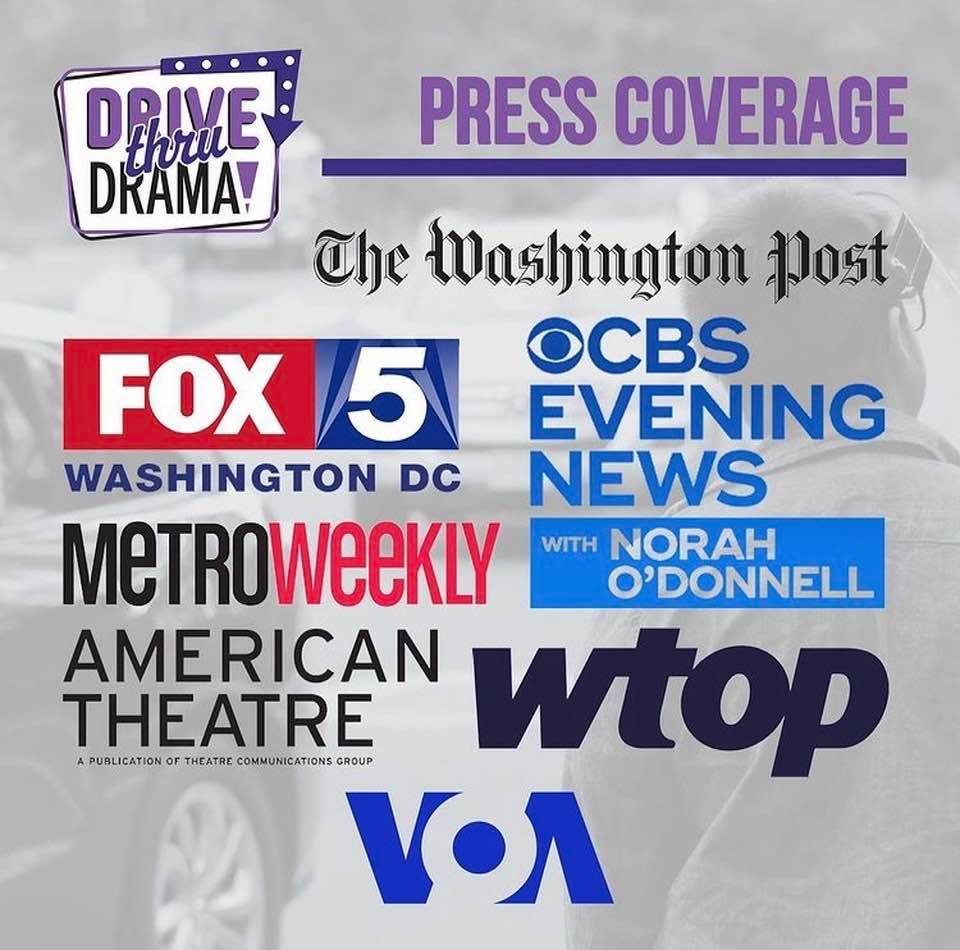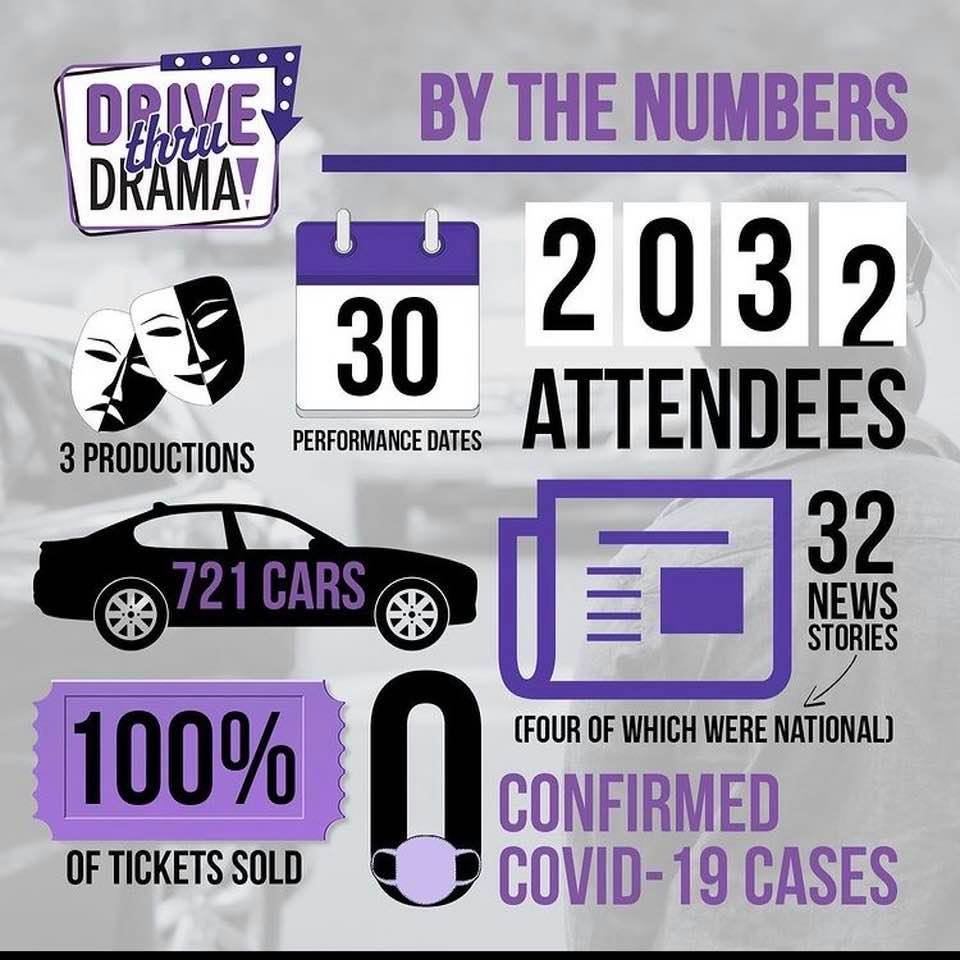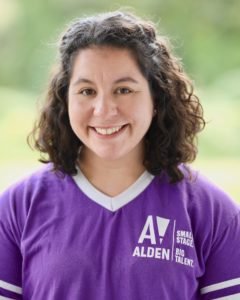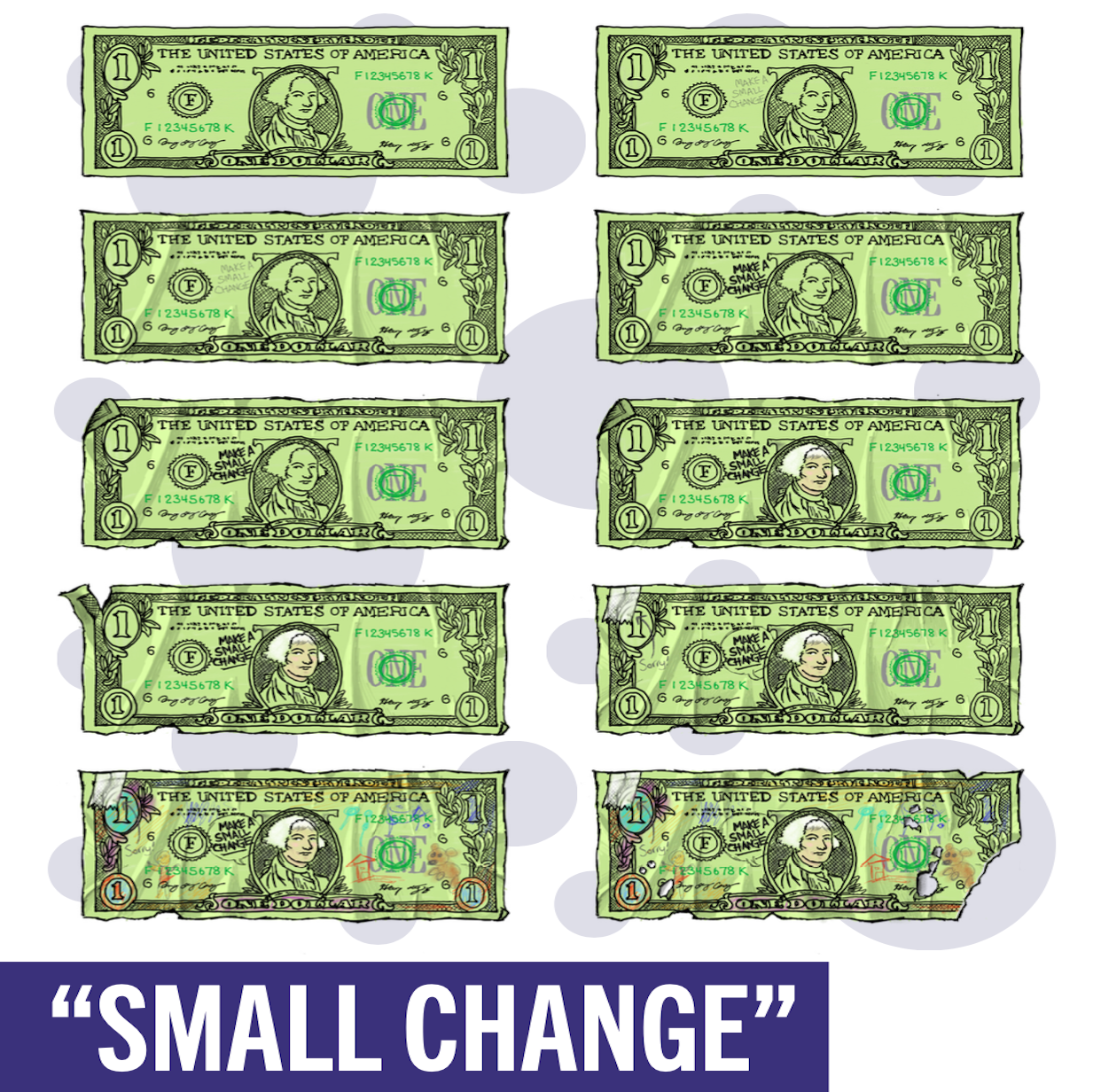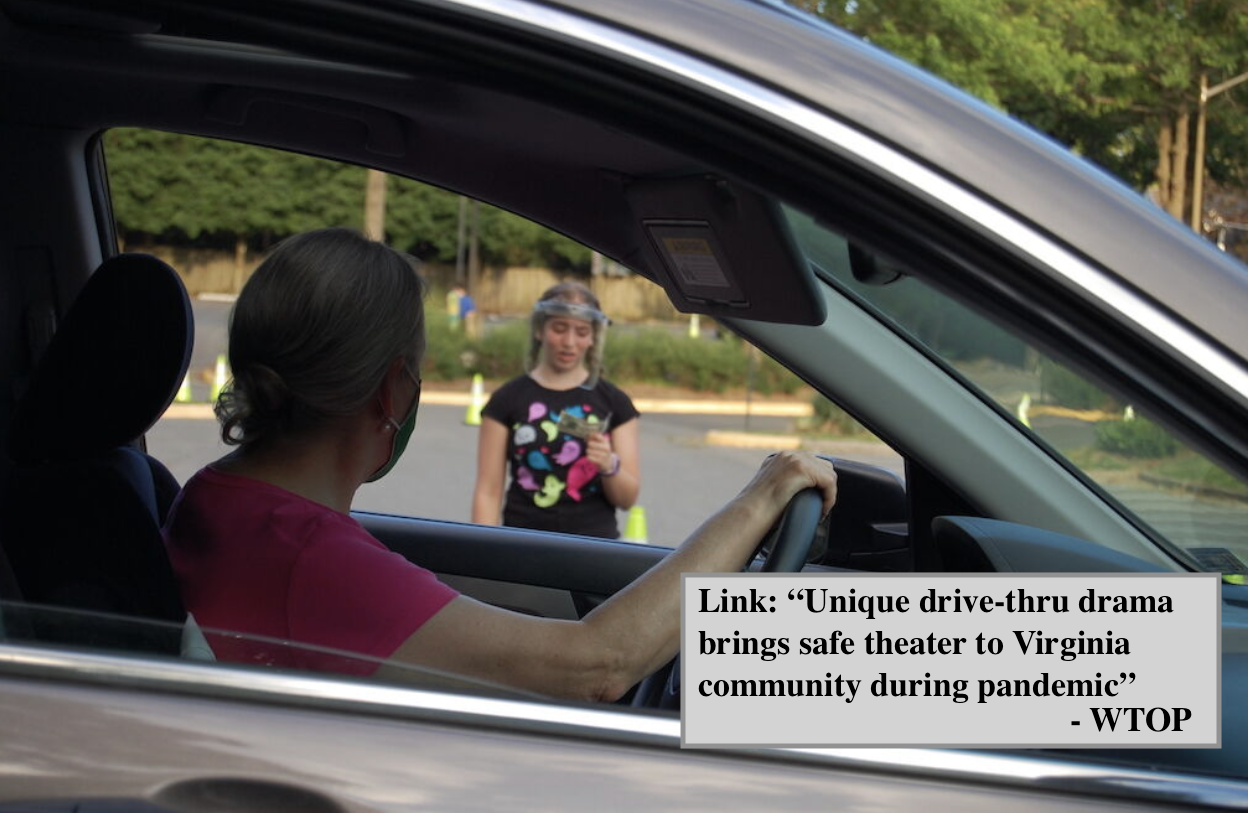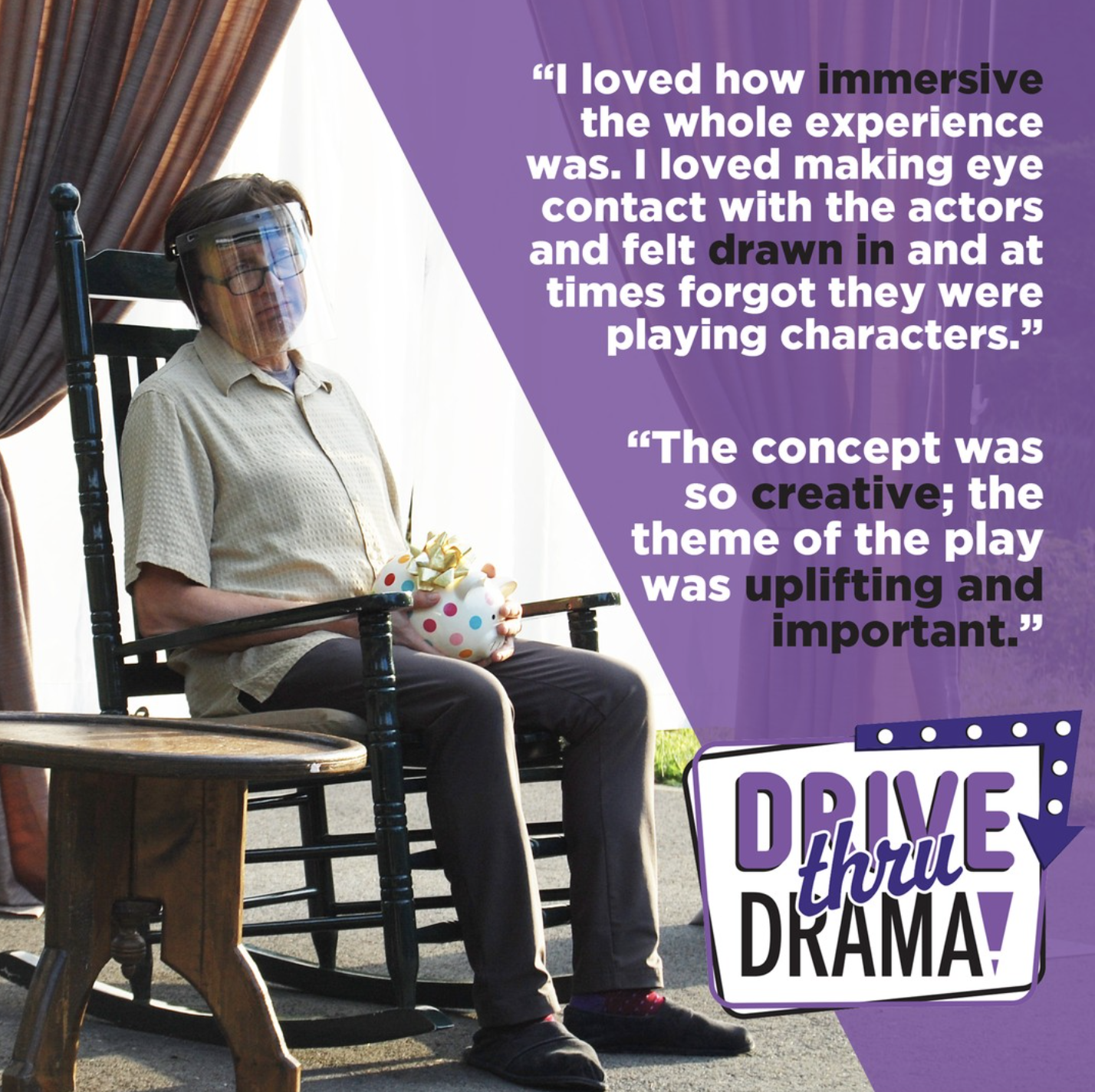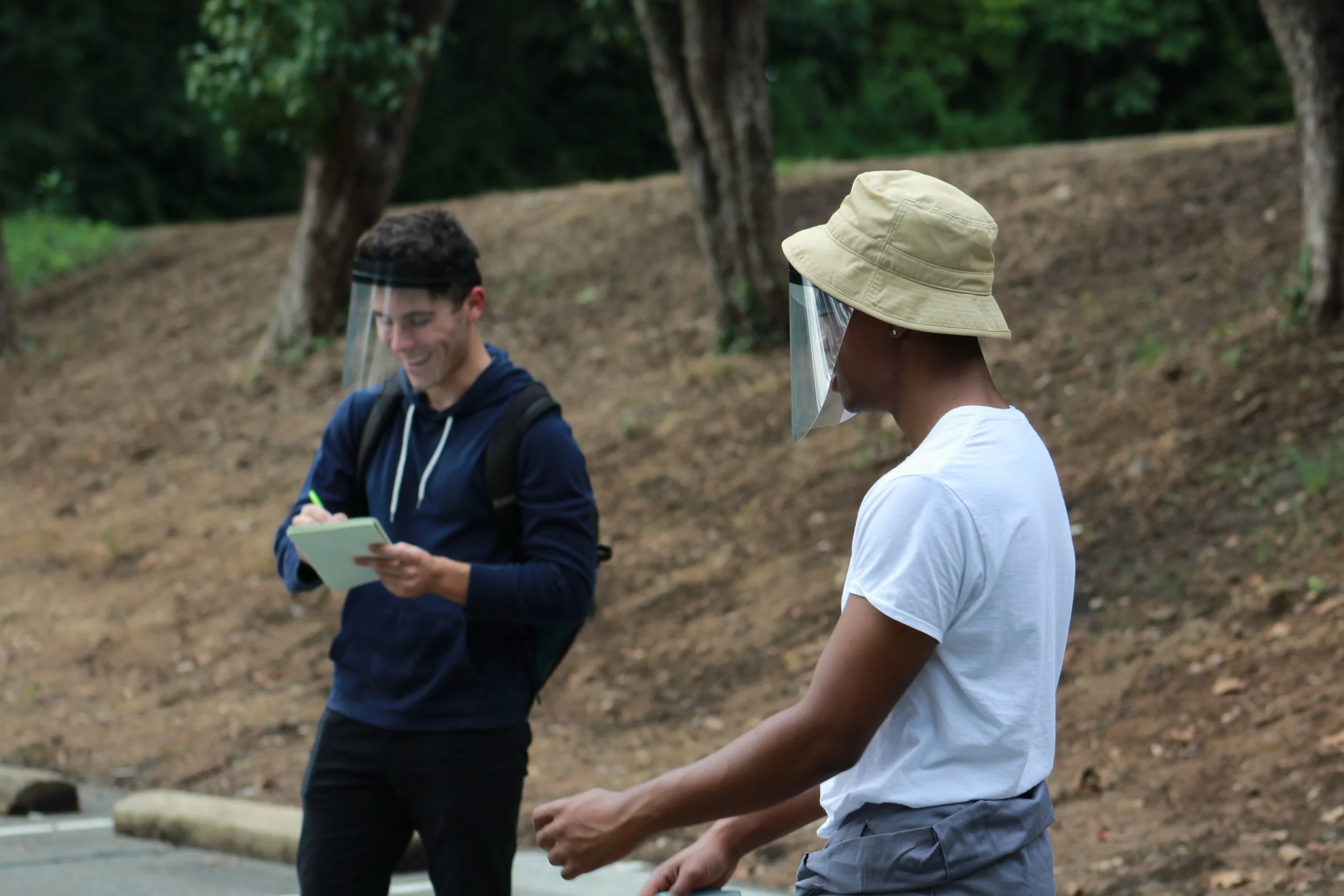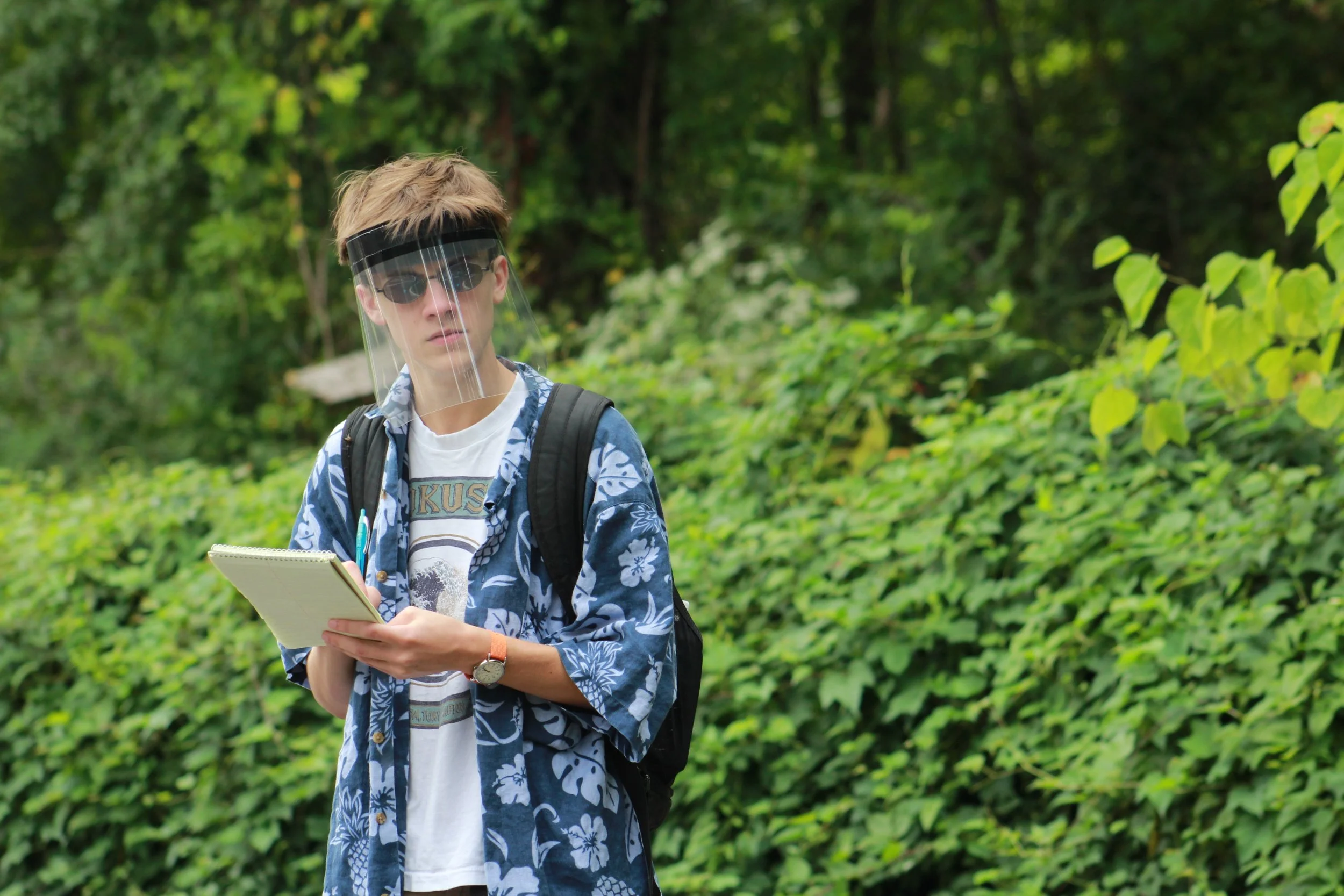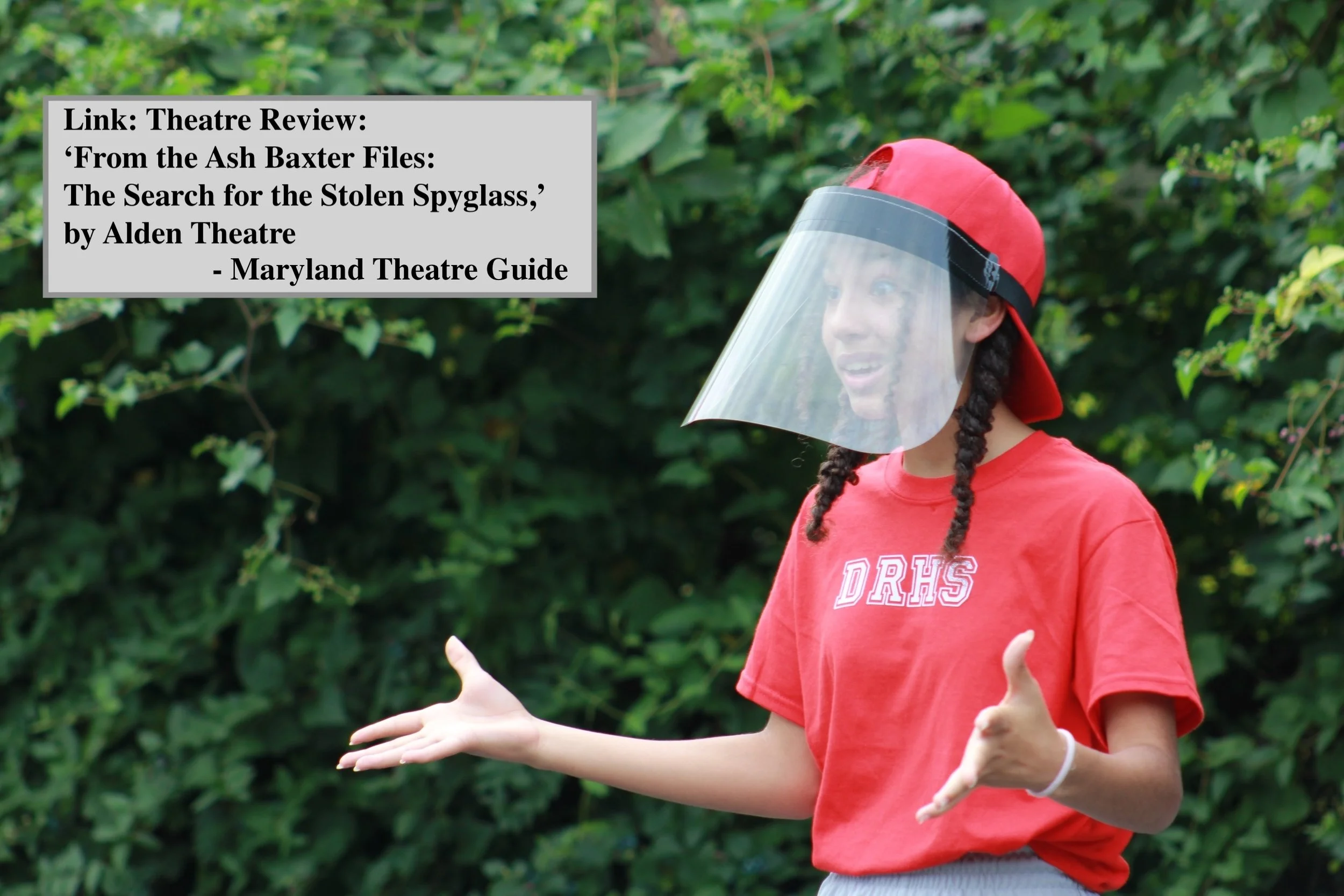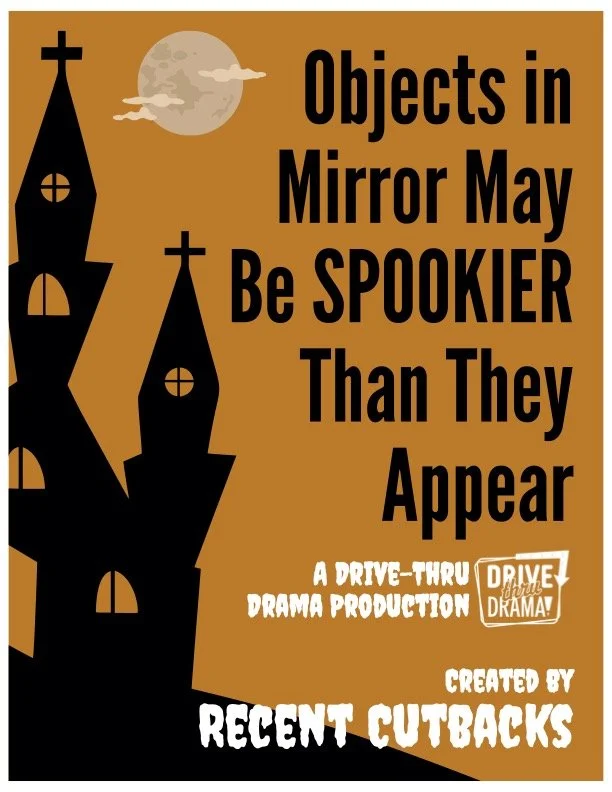DRIVE THRU DRAMA - 2020
Drive Thru Drama is a series of three plays commissioned to be performed in the parking lot of The Alden during the COVID-19 global pandemic. The genesis and subsequent success of these plays represents everything I love most about theatre— the spirit of collaboration, the urgency of storytelling (even under dire circumstances), and the creativity born out of seemingly insurmountable restrictions. What follows is the story of a collection of theatrical artists who continued to create, even in the face of destruction.
The Circumstances
The staff at the Alden likes to joke that I caused the global shutdown in March of 2020. During a production meeting for “Dorothy Meets Alice, or The Wizard of Wonderland,” I felt so ahead of schedule that I said to the design team, “Everything is going so smoothly, I feel like we’re coasting.” The team looked at me with nauseous faces, but I doubled down— “Honestly, give me a problem to solve!”
Five days later, the show was canceled and the world shut down— karma had given us a problem to solve.
The Idea
“Dorothy Meets Alice” was never staged in person, although the set was built and dressed (see also: “The Accident.”) In May of 2020, we gathered the cast and, like so many theatre-makers, presented our work on Zoom.
The following week, the producer of all my shows at the Alden, Danielle Van Hook (pictured), phoned me and pitched two ideas to keep programming going at the Alden. The first idea was a series of Zoom classes and workshops. The second was what she called a “reverse Medieval pageant play,” where instead of a stationary audience, the audience would drive around the parking lot and experience the show one station at a time. Although it sounded intriguing, if a little batty, I genuinely believed management would be most likely to green-light the online offerings, so I consented to running either option, convinced we’d NEVER go ahead with the parking lot plays.
Imagine my surprise when Danielle called the following week and said we were going ahead with the parking lot idea.
Crafting the Play
Having a show green-lit and written into the calendar when you don’t actually HAVE a show yet is one of the most rewarding (if terrifying) theatrical opportunities out there. It’s difficult under even the best circumstances— but given the additional challenges associated with the pandemic (social distancing, masking requirements, not to mention the ever-present threat of illness potentially sidelining a cast member) made this endeavor only SLIGHTLY less than impossible.
What kind of story would people WANT to be told and also be one that could be feasibly staged under these circumstances? As I watched the world’s social media feed descend slowly toward apocalypse, I resolved to write something escapist— as far away from the real world as possible.
I pondered Danielle’s “reverse pageant play” concept and what the contemporary equivalent might be, and couldn’t escape the analogy to theme park attractions you might find at Disneyland— “It’s a Small World,” “Pirates of the Caribbean,” and my favorite, “The Carousel of Progress,” which has a handful of scenes (of necessarily equal length) that take place over decades. I thought I could write something similar, a cycle of gentle monologues thematically linked, which follows a single object through space and time. The resulting draft, “Small Change,” is a one-dollar bill’s journey across the United States over a period of several decades.
We cast the show and held the earliest rehearsals entirely over Zoom in individual sessions. Since no single actor’s performance depends on any other actor’s performance, it was not strictly necessary for full cast rehearsals. Staging a play in partita struck me as very traditionally Shakespearean, when an actor was given their lines, their cues, and no additional context.
Since a live actor performing the same three minutes of text ad nauseam might be emotionally and physically draining, I cast auxiliary performers who each covered three of the ten stations and provided a break for three of the performers. Additionally, I was always available to cover any of the stations. (I wrote the 10 monologues in such a way that there aren’t really any age, gender, or ethnicity requirements at all.)
As we approached our first of two weekends, it seemed that Danielle’s instinct that people were hungry for this kind of experience paid off. We sold out both weekends almost immediately and added a third. (The third weekend is when the flexible casting really came in handy— as we had to recast some roles when actors were no longer available.)
And it seemed like every news outlet’s theatre desk wanted to cover us— from local TV stations to national publications (like “The Washington Post” and “American Theatre Magazine.”)
Most rewarding of all was the audience response. Watching each carload of audience members pass by with their faces unable to hide their reactions was very meaningful. And on the last performance, the cast, most of which had never seen the play in its entirety, followed the last car as it journeyed through the parking lot after they had performed their scene.
I was so proud and moved by the experience, I almost didn’t panic when the ever-ambitious Danielle asked for two more plays.
Let’s Get This Show on the Road!
Developing the Formula
In August, we penciled in the calendar dates for the next two shows— number two would be in September, and three would be in October. With the night sky going to be darker sooner, a Halloween-themed show seemed obvious for the third slot. I asked Danielle to pass that commission along, as there would be plenty of time to explain the format to a new writer.
But for the second show, I wanted to see what this unique format was truly capable of. I again thought of Disney attractions, but the way the cast members of “Small Change” followed the last car through the trail of the parking lot reminded me of rides like “Jungle Cruise” and “Tower of Terror,” which also operate on a timed track, but which feature a “guide” in the vehicle as you ride. What if an actor walked the parking lot with the car as they went along? What would they be doing?
The idea seemed to pop into my brain fully formed— the time of year (first few weeks of school), one character interviewing one person at a time, the opportunity to personalize the performance to one specific carload of people, and the parking lot setting all seemed to lead me to “Ash Baxter,” a high school sleuth in the vein of Encyclopedia Brown who needs to help a teacher locate a lost item by interviewing members of school clubs that meet after school, all of whom have a reason to lie about their whereabouts. Except Ash can’t solve this case alone! The audience needs to help Ash find the holes in the suspects’ alibis.
A Logistical Nightmare
I’m not usually one to fall in love with my own work, but I did this time. And it’s a good thing I did, because otherwise, I would have definitely pulled the plug. It wasn’t until I had written the first draft that I realized this was going to be a MASSIVE headache.
For one thing, the play was only eight scenes, but to accommodate break times and exhaustion, we would need to cast about 14 Ash Baxters. (Luckily, since Ash is never spoken about in the third person, pronouns aren’t a problem and Ash could be played by anyone.) Mr. Dimwizzle, the poor victim, would appear in the first and last scenes to bookend the show, so we’d need at least three Dimwizzles. (As Dimwizzle Number One goes over to perform the last scene for the cars he started with, Dimwizzle Number Two would start the show for the next batch of cars, and so on.)
Also, since the show was interactive, I wrote three versions of each scene. The “puzzle” in each scene had easy, medium, and hard options, which the car could select before beginning the show. Ash would then cue the scene partners as to which version of the show was happening by using one of three color-coded pens to take evidence notes. (There was a fourth option, non-interactive, although it was never selected.)
During the show, the cast would gather in a section of the parking lot that I affectionately dubbed “the Ash tray.” This is where the stage manager used a large white board to communicate which car would be the responsibility of which Ash Baxter and which version of the show they’d be doing.
Design-wise, we decided to build out the world of Dakota Riddle High School (get it?— “decode a riddle”), home of the Fightin’ Red Herrings! As the cars arrived (the ticket was their license plate), they met with Coach Rhodes, the school’s driving instructor, who explained the practical logistics of the show, how to alert staff if there’s a problem (honk twice), and a brief explanation of how the play “works.” Coach Rhodes told the audience about one of Ash’s previously solved cases involving the hapless drama teacher (Miss Q).
This brief introduction, and in fact all of the scenes, were built with a healthy amount of ad lib opportunities. This way, if the next scene wasn’t ready yet, Ash could “play” with the audience until everyone was ready to rotate. This allowed the performers playing Ash to develop the character however they liked. Some performers made Ash more mild-mannered and interested in the audience’s backstory; others gave Ash a more know-it-all vibe; one of my actors played Ash as a fan of various classic television detectives, wearing a Hawaiian shirt and often carrying a tape recorder, recalling “Magnum P.I.” and “Twin Peaks.” (And I believe he also sometimes ate a lollipop during his track.)
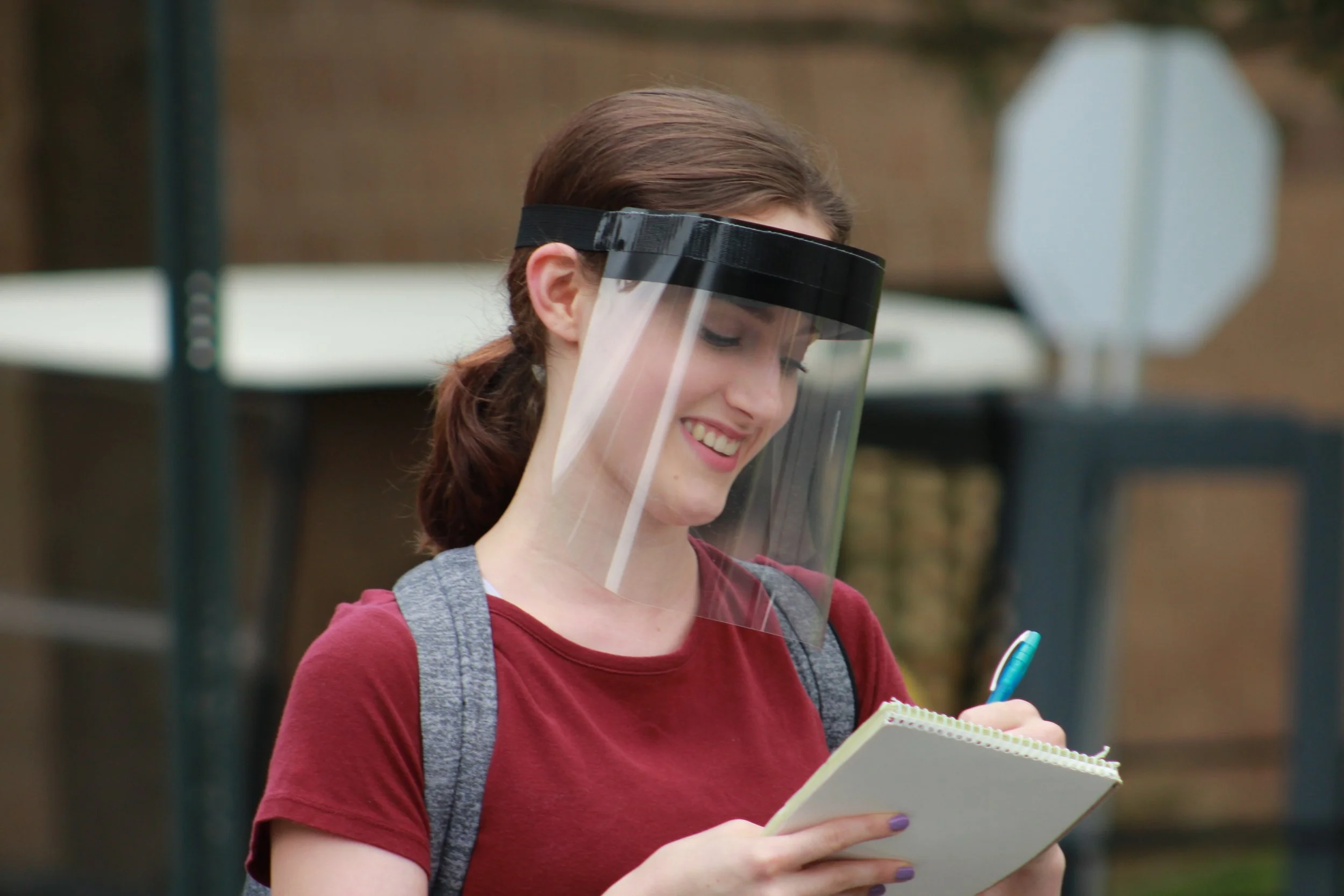

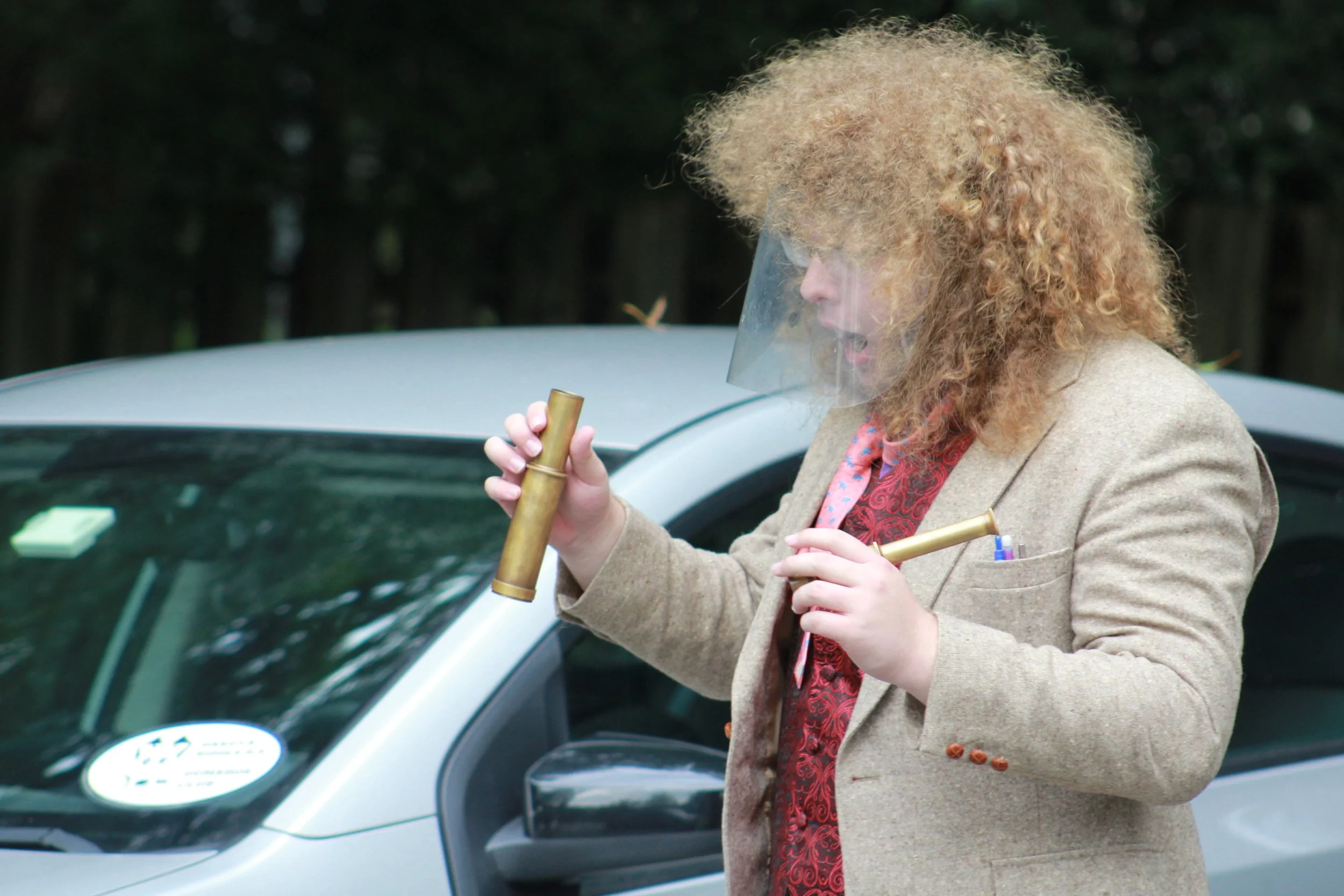
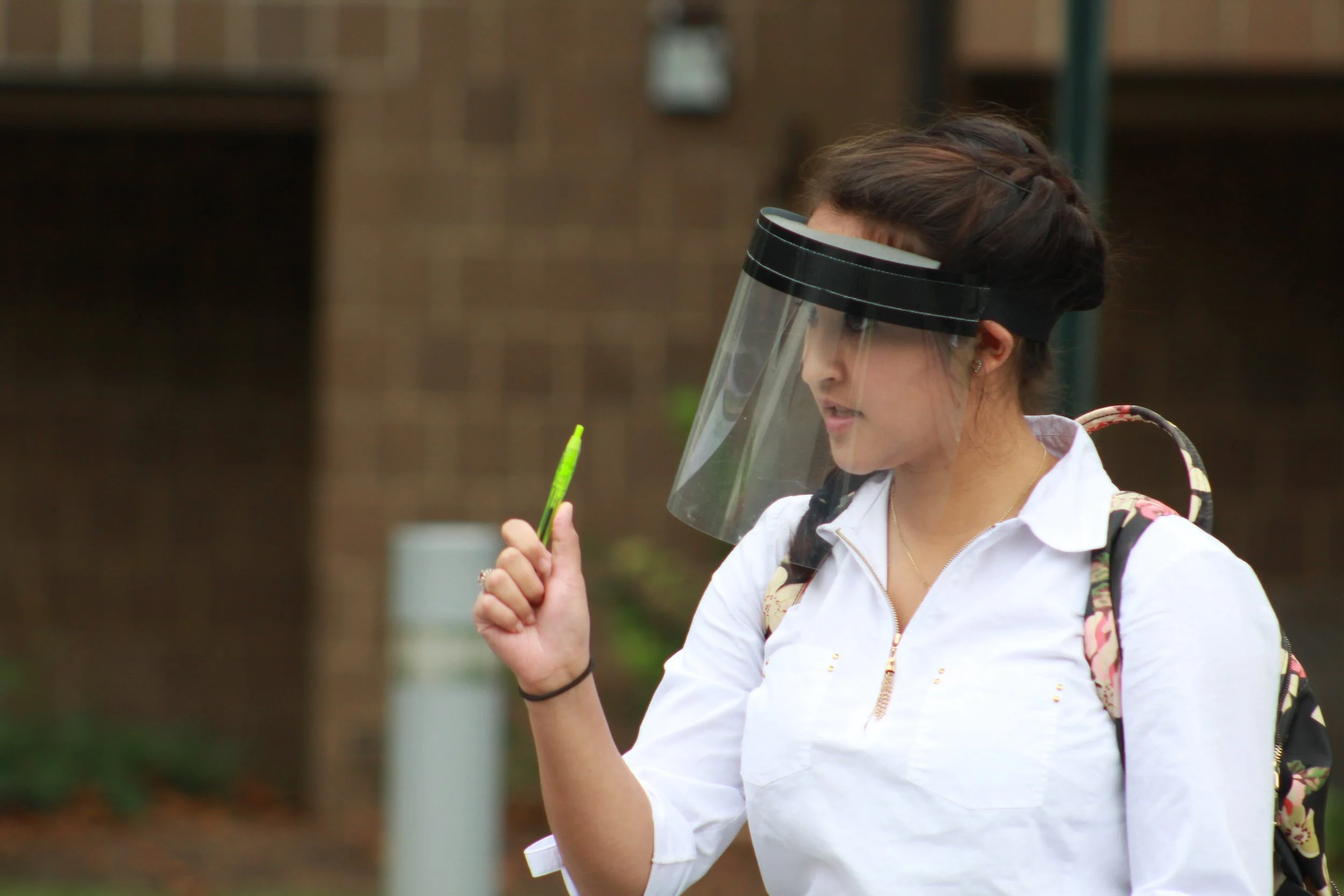
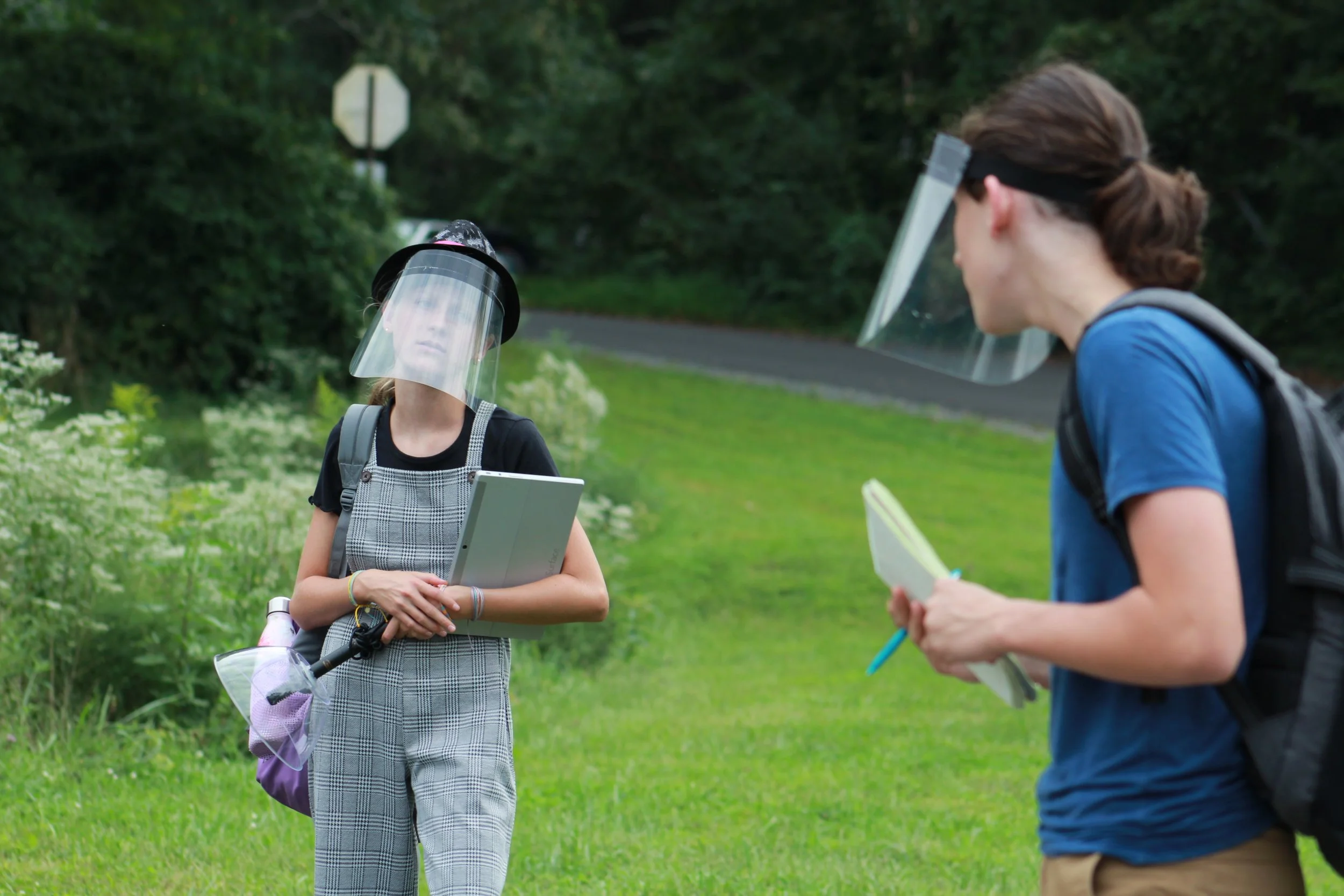
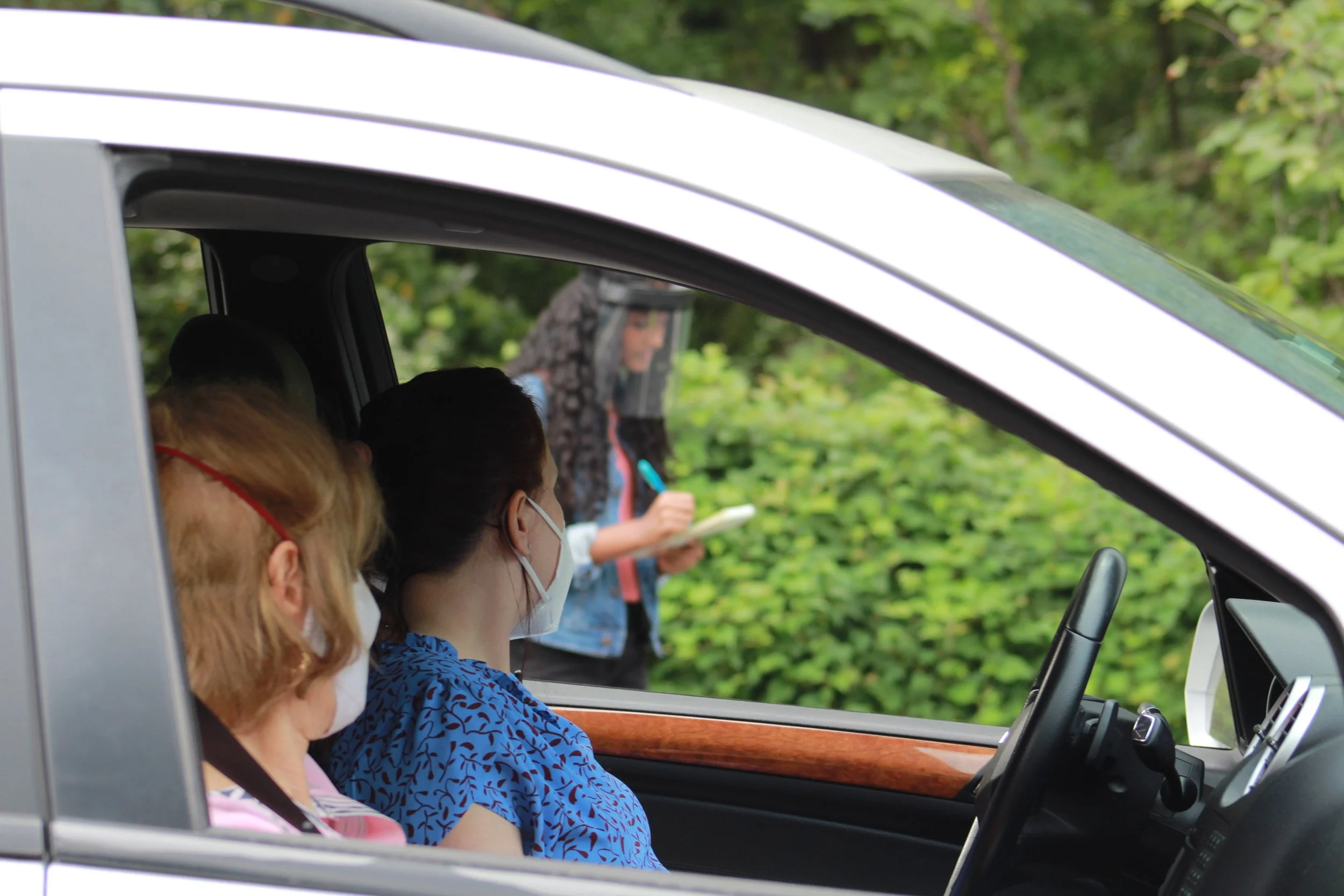
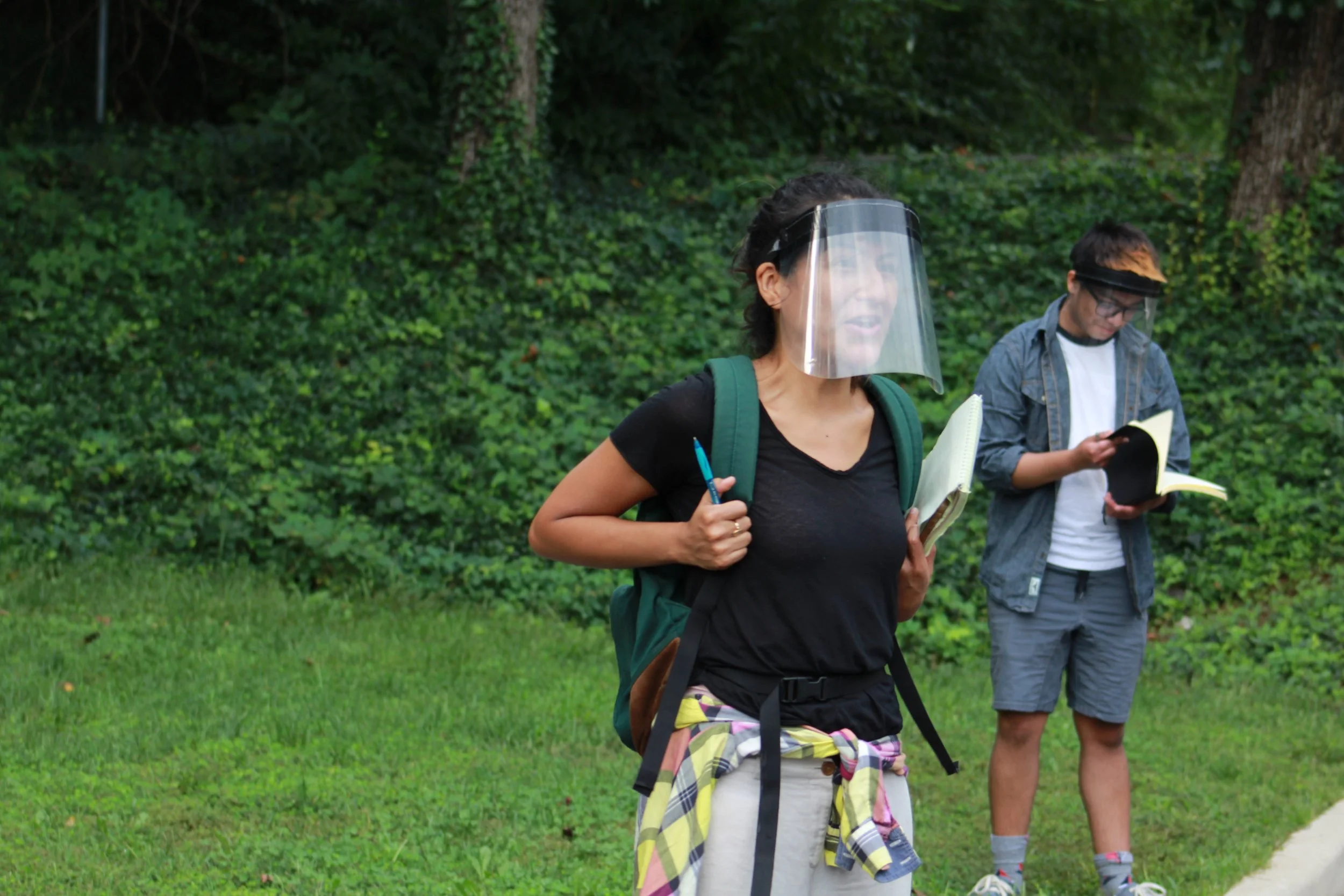
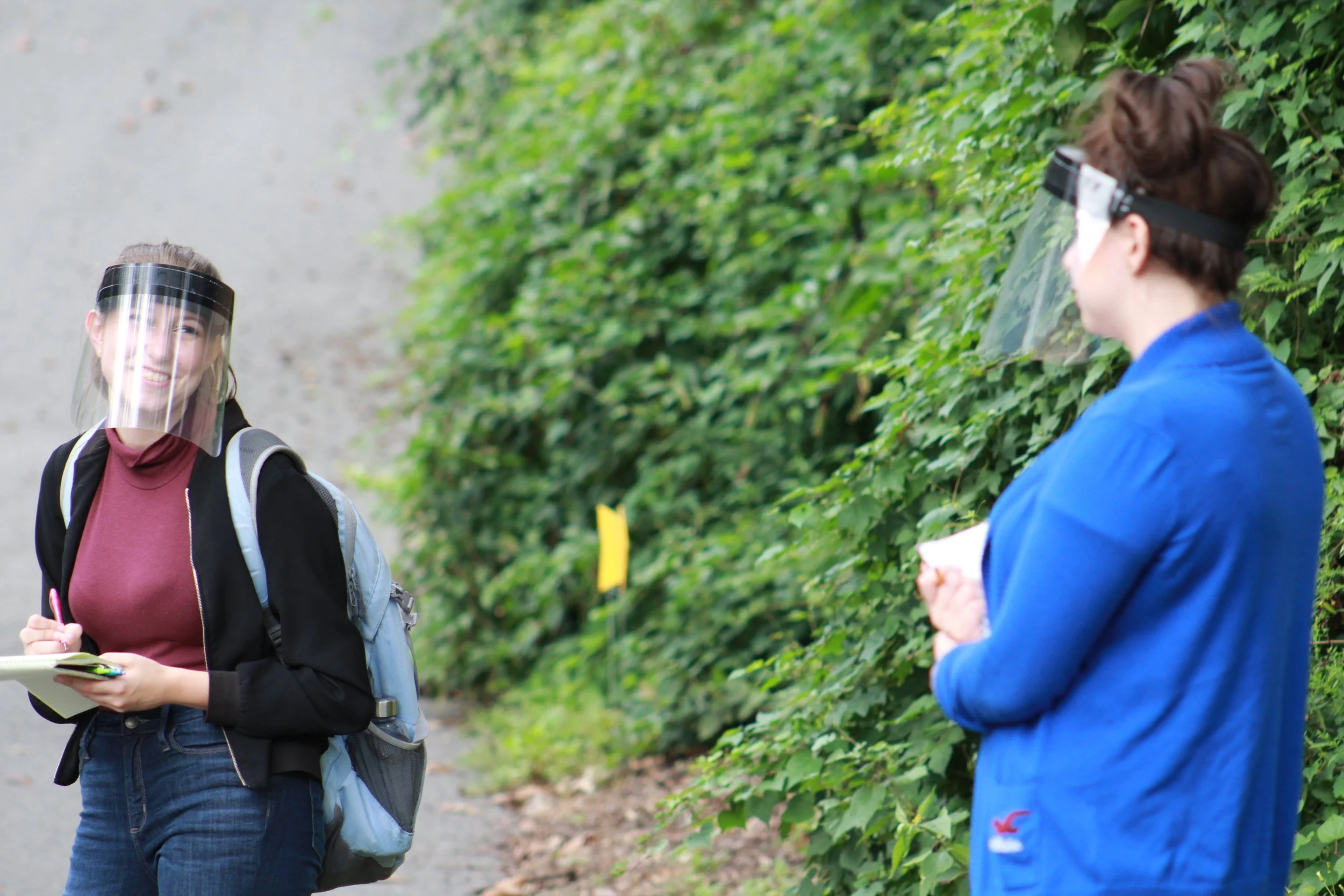
Word Spreads
Cast and crew remained equally committed to making the show work, and despite potential headaches, everything went off without a hitch.
And again we received a fair amount of coverage and positive response. Chip Reid from “CBS Evening News” came to do a piece on us.
Expanding the Universe
Writing two plays in the space of only six weeks beat my previous record by— one. Writing a third would have broken me.
We called on collaborators Recent Cutbacks to write something in the weeks we were rehearsing and staging Ash Baxter. As a troupe, RCB is celebrated for their innovative use of foley and props. The resulting play, “Objects in the Mirror May Be SPOOKIER Than They Appear,” leaned heavily into both, especially in the approach to masking the actors.
The plot involved the audience meeting classic Halloween characters (a zombie Yoga instructor, young Drac, a fitness instructor, and singing mummies) and receiving pieces of a puzzle that would lead to meeting “the Monster.” Lighting the parking lot proved especially fun, since the show ran after sundown. And the weather held— we only had to reschedule one performance (our only rainout during the entire DTD project.)
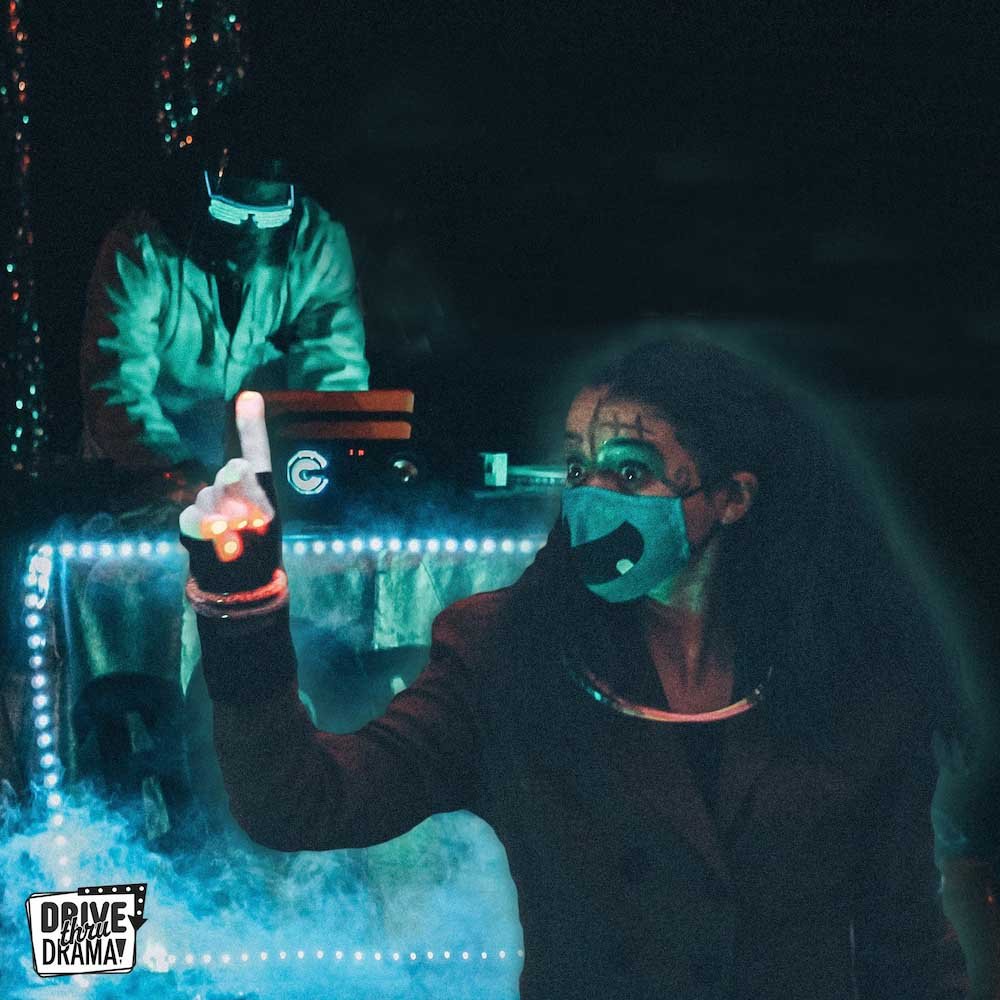
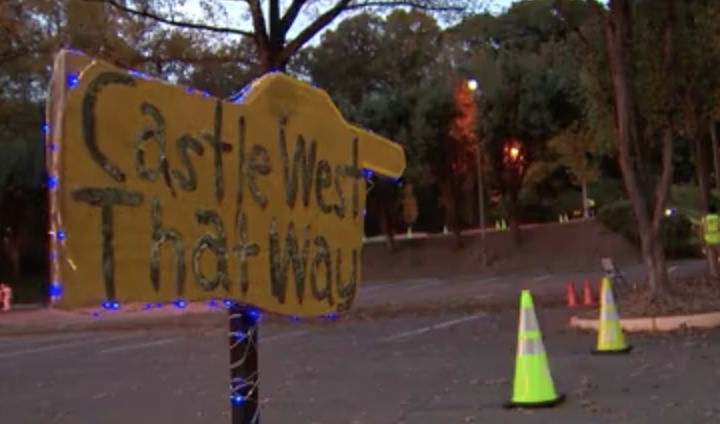
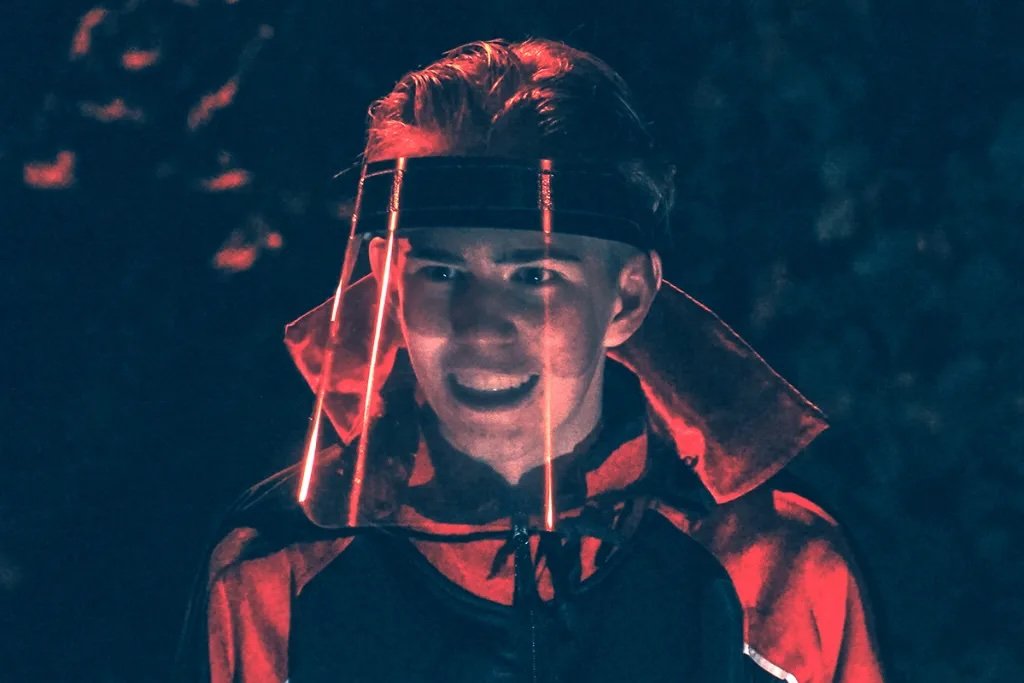
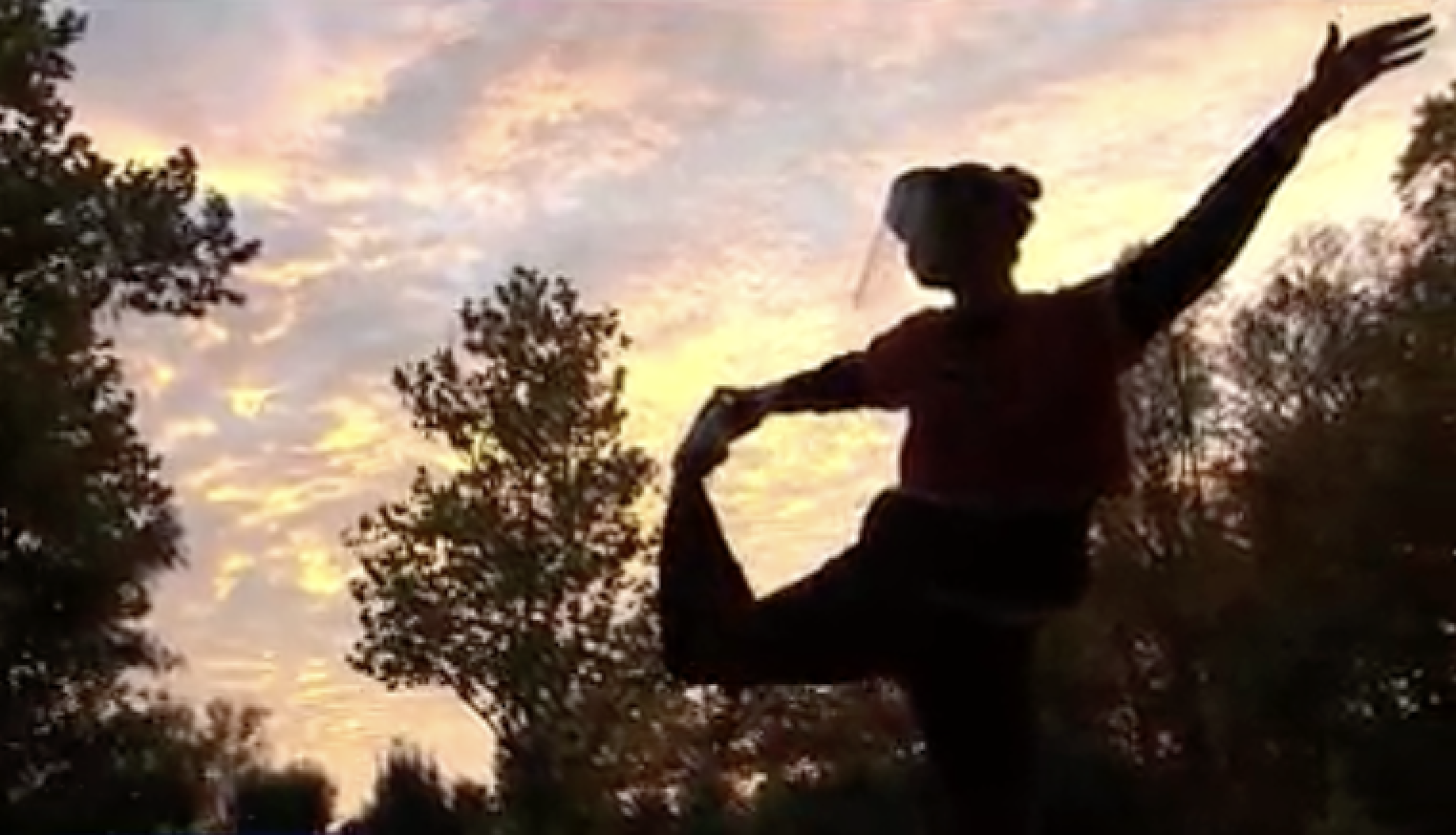
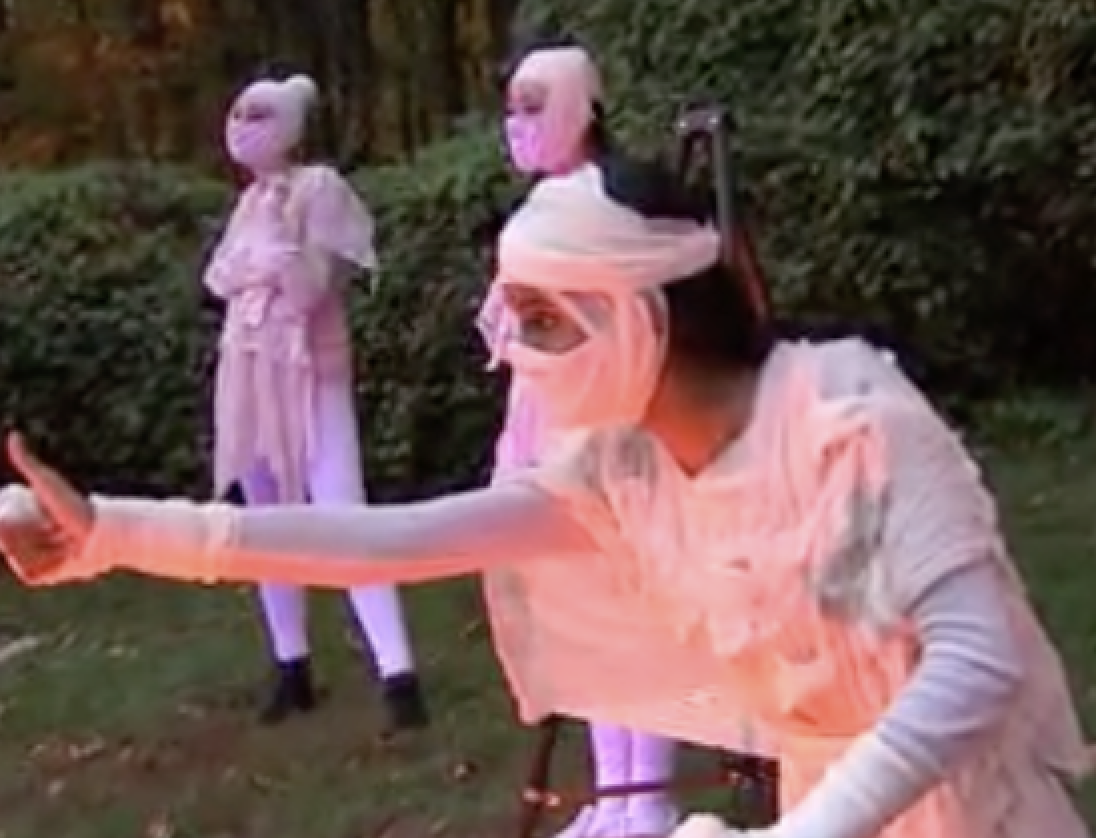
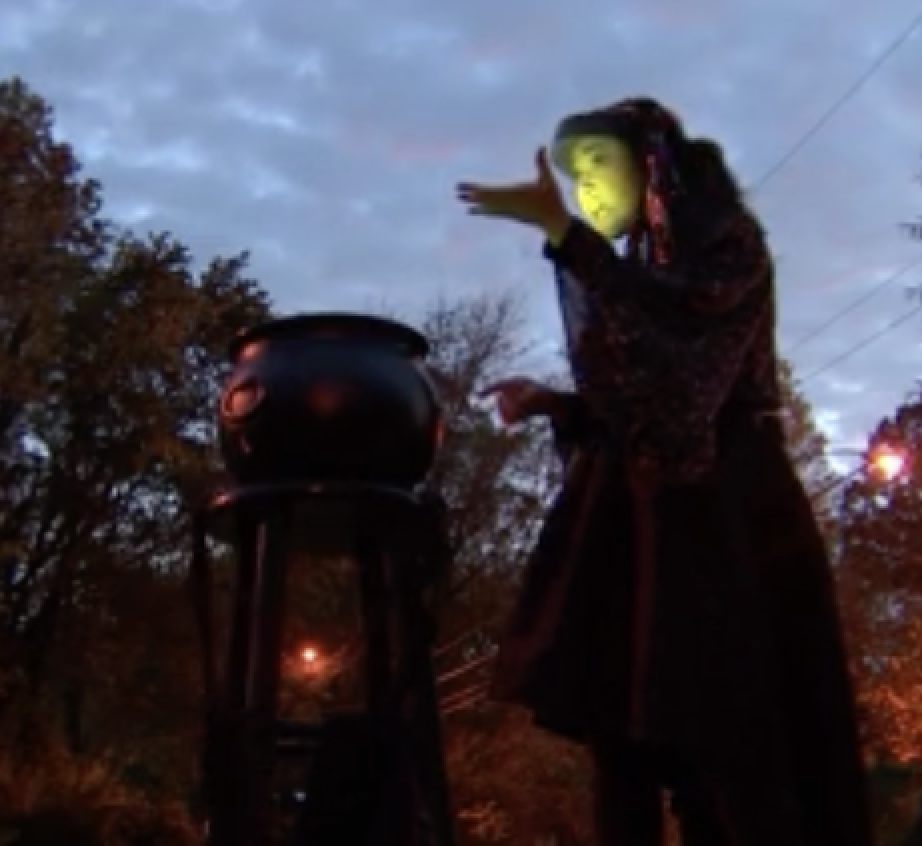
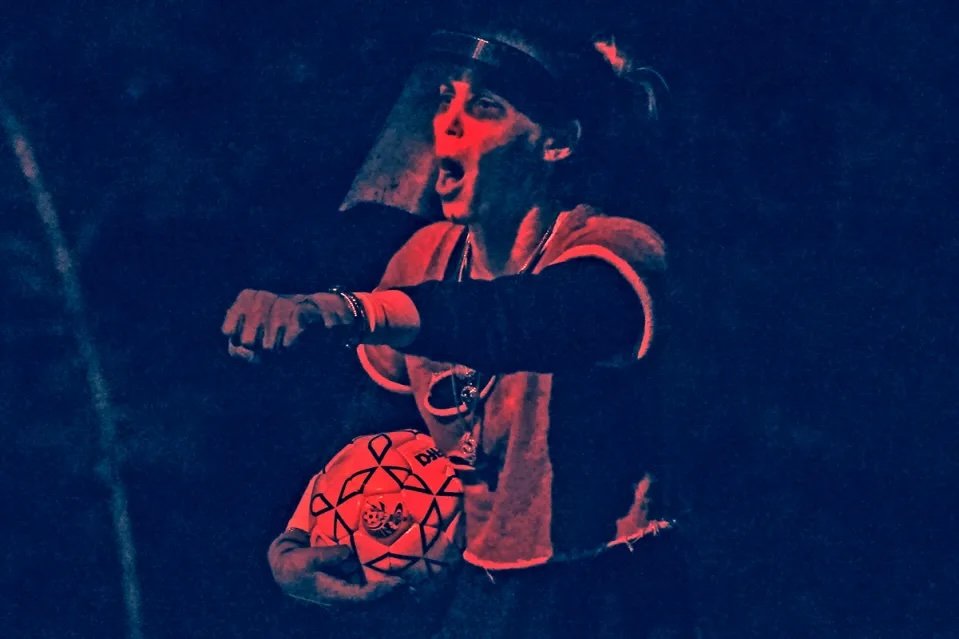
The Final Tally
As an artist, I am lucky that I can point to a single experience that defines practically all of my strengths and passions, and one that was as successful as possible by every conceivable metric. The charts below detail just a small sampling of the responses and numbers. (We had one car battery die; the car still finished the show. We had one rainout; we rescheduled and ran without a hitch.)
One person told me I must have been mistaken (or lying) about the ZERO confirmed COVID cases among cast, crew, and audience. I assure you, I am not lying. (I responded, half-jokingly, that I would have preferred the number actually be ONE confirmed case— to prove the model was effective at stopping the spread.)
This is the story I will dine out on for the rest of my life, until the nursing home orderlies shake their heads and insist I must have made the whole thing up. If you made it this far and we ever have occasion to meet, I would happily chat further about it.
